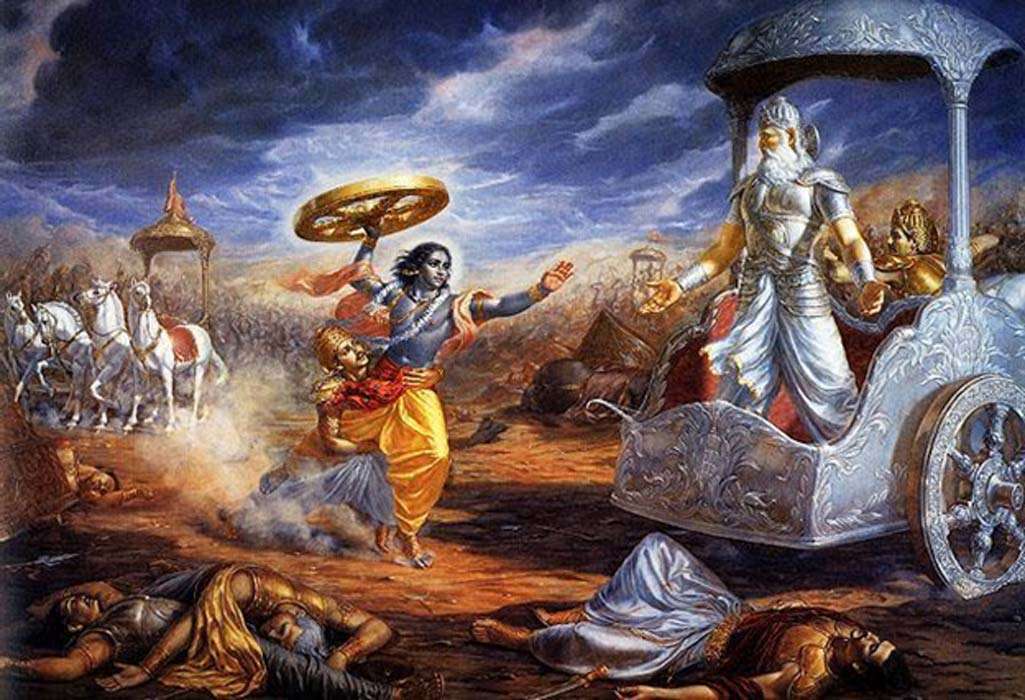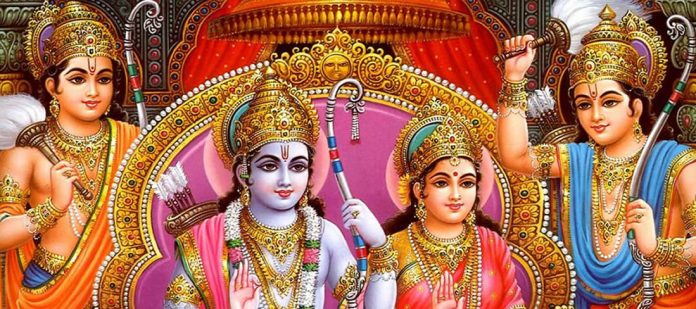Epics in India mean the Ramayan and Mahabharat. These two epics have cast a deep influence on the Indian mind. The stories of these two epics can be told by every Indian. Every Indian becomes emotional when told about the characters of these two epics. Many great persons of India like Mahatma Gandhi, Aurobindo Ghose, Shivaji, RanaPratap andSubash Bose among others have been influenced and inspired by these two epics. Mahatma Gandhi was much influenced by the stories of Shravana Kumar and Satyabadi Raja Harishchandra. He incorporated these ideals into his own life. Shivaji heard stories of heroes of Ramayan and Mahabharata, got inspired and later fought against the mighty Mughal empire.
Likewise every Indian gets inspiration from the characters of these two epics. Ramayan is an epic of Treta Yuga and Mahabharata is an epic of Dwapara Yuga.
Both the epics have words of wisdom. There are few characters in Ramayan. But there are large number of characters in Mahabharata. Ramayan has seven cantos (Kandas) and Mahabharata has eighteen Parvas. And in the Bhismaparva one important section is Bhagwadgita – the most sacred scriptures of the Hindus.

Ramayan is more popular. But Mahabharata is more powerful. By reading Ramayan, we get three purusharthas – Dharma, Artha and Kama. But by reading Mahabharata, we get all the four purusharthas – Dharma, Artha, Kama and Moksha.
The happenings of the Ramayan are earlier to that of Mahabharata. The Mahabharata war was fought in 3102 BC. This ends the Dwapara Yuga and begins the Kali Yuga. In the earlier times, these two epics had shorter versions. In the Gupta era, these two epics along with other puranas were revised and many interpolations were made. Hence they became bulkier.
The original name of Mahabharata was ‘Jaya’. Later on additions were made increasing the number of Slokas from 8000 to 25000 and was named ‘Bharata’. Again after some hundreds of years additions were made increasing the number of Slokas from 25,000 to 1,00,000 and was named ‘Mahabharata’. This was done in Gupta time. Now we read Ramayan and Mahabharata as the Gupta editors have left it for us. Mahabharata was first recited in the precincts of the Mahakal Temple of Ujjain.
The impact of epics on Indian mind is enormous. The bright example is Tulsi Das’Ram CharitManas. On hearing Tulsi Das Dohas of Manas, people turn mad. They become oblivious of the outside world. They forget their own existence. They melt themselves almost to waterlike. MaryadaPurusottam Ram is a household name in India. Everybody sympathises with Rama’s agony for his painful exile of fourteen years only to keep his father’s truth.
Similarly we sympathise with Pandava’s exile of twelve years forest life and one year incognito. What we learn is that good persons suffer. There is always the problem of evil, but in the long run good is rewarded. This is the lesson we get from the epics.
Mathew Arnold, the famous nineteenth century English poet-critic said – Religion is morality touched by emotion. So the epics of India are religious stories of morality. The epics have moral purpose. It is the light house of society.
Mahabharata teaches ‘Apad dharma’. It means what one should do at the time of crisis. Dharma (righteousness) is the most important aspect of human life. When Dharma dies in the hearts of Man, no law, no constitution can save it. So we should make our Dharma alive in our hearts. This can only be achieved by following the ideals narrated in the epics of India – Ramayan and Mahabharata. Ramanand Sagar and B. R. Chopra has done yeoman’s service in picturising these tales for the television.
(The views expressed are the writer’s own.)

Radhakanta Seth is an Income tax officer in Sambalpur. He is a Freelance writer and his articles have been published in some Oriya dailies like Sambad, Samaj, Dharitri and English dailies like The Telegraph and in a sociological journal ‘Folklore’ published from Kolkata.

